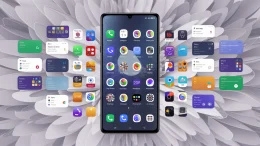This morning at the Web 2.0 Expo in San Francisco, Jason Grigsby of Cloud Four, a mobile and web development firm, presented at a session about the mobile web’s future. Specifically, he focused on the different types of mobile applications we have today – native apps, mobile web apps, and hybrid apps – and the challenges of developing across multiple platforms.

The question that Grisby raised during his presentation is an important one: are native applications really the future of the mobile web? Applications built specifically for one device, such as the iPhone, aren’t necessarily any more capable than those built using web technology. In fact, they can even tap into the functionality of the phone’s hardware itself like the accelerometer and geolocation features. (Really!)
In fact, the ability for mobile web developers to get their apps on a number of platforms without having to start from scratch each time has been made even easier as of late thanks to a new project called Phonegap. This open source development tool is actually a web-based platform that lets developers build apps in HTML and JavaScript while also allowing those apps to take advantage of the core features in the iPhone, Android, and Blackberry.
When you look at the type of applications built using this technology, you may be surprised. If you didn’t already know they were made using PhoneGap, you may have thought that they were native applications. Take the Blok-Buster game (iTunes URL) for example, a Tetris-inspired game that involves clearing similarly-colored blocks from the screen. You can tilt the phone horizontally, vertically, or even flip it upside down and it behaves just as a native application would. Yet it is just a web app using the PhoneGap’s functionality.
Technology like this can speed up the process of getting applications deployed across a number of platforms. That’s something that is more critical than ever as we move forward with mobile web development. Today, there are just too many languages and platforms to code for and in the future there could be even more. So, perhaps we shouldn’t be focused solely on native applications as the future of the mobile web after all. Maybe the future of the mobile web will just be the future of the web.
There are a number of fascinating figures and observations from Grigsby’s presentation (embedded below) about the state of the mobile web and the challenges ahead. It’s definitely worth a look.
Native vs. Web vs. Hybrid: Mobile Development ChoicesView more presentations from grigs.

















